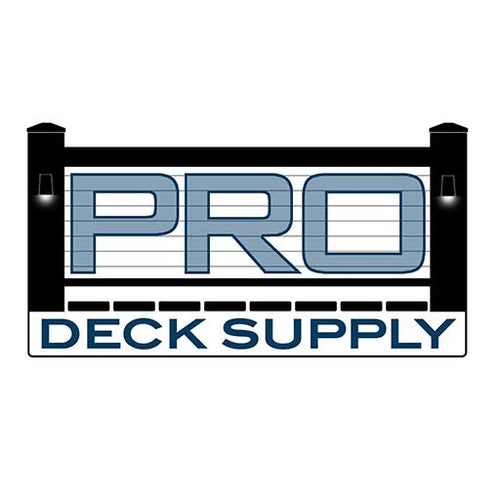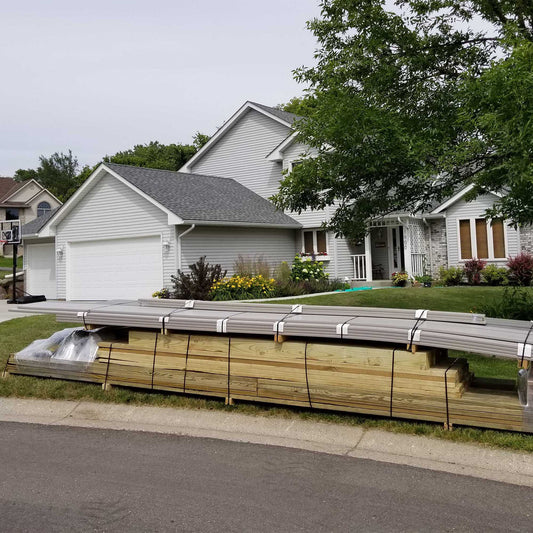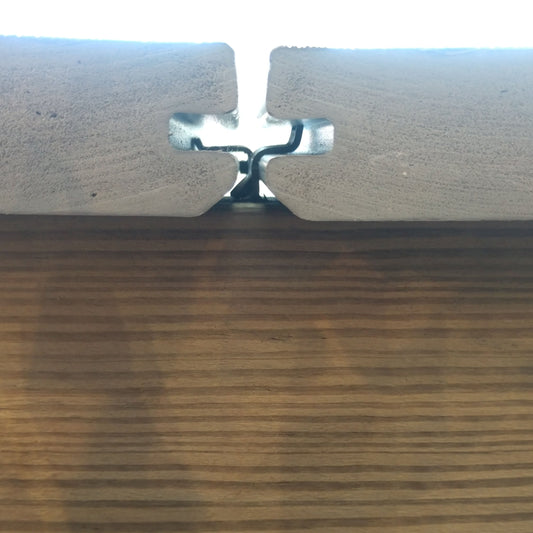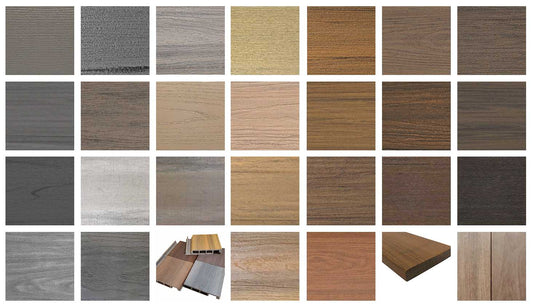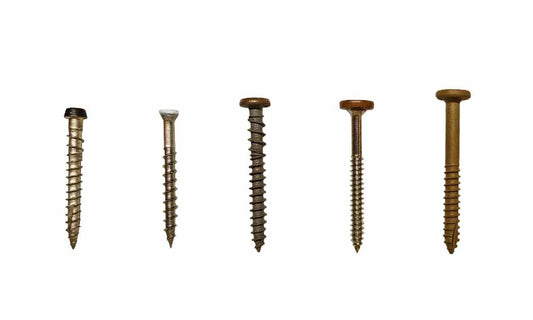Using the old-fashioned method of screwing through a deck board into the wood deck framing is the most secure way to fasten a piece of decking. But if you're using anything other than softwood or treated decking, you'll want to pay special attention to the screw type.
Trim head screws are a common type of screw used with wood, but it should only be used with specific types of decking.
Lengths: Usually 2-1/2" for decking, and 1-5/8" for 1/2" thick fascia.
Compatibility: Ipe (when pre-drilling), PVC decking (usually with a colored screw head), and PVC trim and fascia.
These screws are commonly used with ipe decking and pre-drilled with a special countersinking drill bit, especially at butt seams where a clip won't hold the board ends with the correct spacing.
Trim head screws are available in many different colors for fastening PVC decking with no drilling required. Colored 1-5/8" variations are available for securing 1/2" PVC fascia boards.
If trim head screws are used on composite decking, a few things could happen: either the screw head could break off, the threads could lose their grip and not be able to pull the screw down flush, or it just won't start in the deck board. If used with Ipe or hardwood decking, they will likely start, but will probably crack the board or not be able to be driven down.
 Composite-head screws
Composite-head screws are designed specifically for composite decking and Surestone decking to eliminate the need for pre-drilling in most applications.
Lengths: 2-1/2" and 2-3/4"
Compatibility: Composite screws can also be used for PVC if desired, but we recommend trim screws for PVC since the seam around the head is cleaner.
These screws have a tapered cylindrical head and reverse threads that work together to shear off and compress the dense composite material. The head leaves a clean cut through the shell, and the reverse threads push material downwards rather than outwards, which prevents bulging around the screw head.
When screwing composite screws deeper than the surface for plugs, or when drilling within 2" of the end of a board, 1/8" holes should be pre-drilled. This prevents board splitting and mushrooming around the plug.
Screws for wood decking are different from composite and PVC screws because they typically have a larger head and less aggressive threads. The larger head keeps the screw from pulling through the softer wood, and the threads are less aggressive to keep the deck board from splitting when it's driven without pre-drilling.
Lengths: usually 2-1/2", but sometimes slightly longer to accommodate decking thicker than 1".
Compatibility: Cedar, treated, and softwood decking. If used on composite decking, the threads will lose their grip before the head is pulled flush with the decking surface, and may even break off because of WPC material's density. May work with PVC or Surestone, but the sinking the head cleanly could still be a problem. Wood decking screws are typically only available in a few colors that would match real wood, and will not often match WPC or PVC decking.

Edge screws were made popular by Camo Deck Fasteners, are a unique screw used in a "toenail" type application, but used with a tool for precise location and a clean appearance. They are considered a hidden fastener because they are driven into the edge of a board rather than the top, and only a small hole can be seen when looking down the decking seam. They also have a flat tip that helps pre-drill through denser WPC material without the need for pre-drilling, and won't cause bulging around the hole. Sideloc is a version of Camo edge screw manufactured by Timbertech for their PVC decking, the only difference being a pointed tip that starts faster.
Lengths: 1-7/8" and 2-3/8". 1-7/8" screws are designed only for decking with a true 1" thickness, 2-3/8" screws can be used on decking that is up to 1-1/2" thick.
Compatibility: PVC, wood-plastic composites, Surestone, cedar wood, treated wood, and most other softwoods. May work on Ipe and hardwoods without pre-drilling, but care should be taken in case of splitting, especially on thinner profiles of decking.
Do NOT fasten composite, PVC, or Surestone decking with other traditional fasteners like nails or construction screws, or you will likely get bulging, blistering around the screw head, broken fasteners, tripping hazards, and fasteners that pull out over time. Hidden fastening clips, trim screws on tongue-and-groove boards, and Camo screws will work well when used correctly, but we'll save that for another article.
![]()
Correctly fastened PVC decking using Toploc 2-1/2" screw (photo below)
Deckorators Surestone decking INCORRECTLY fastened with a trim head screw (photo below)
Correctly fastened Azek PVC decking using trim head screw with painted head (photo below)
Camo Edge screw installed in a Wolf PVC deck board (photo below)

 Composite-head screws are designed specifically for composite decking and Surestone decking to eliminate the need for pre-drilling in most applications.
Composite-head screws are designed specifically for composite decking and Surestone decking to eliminate the need for pre-drilling in most applications. 





